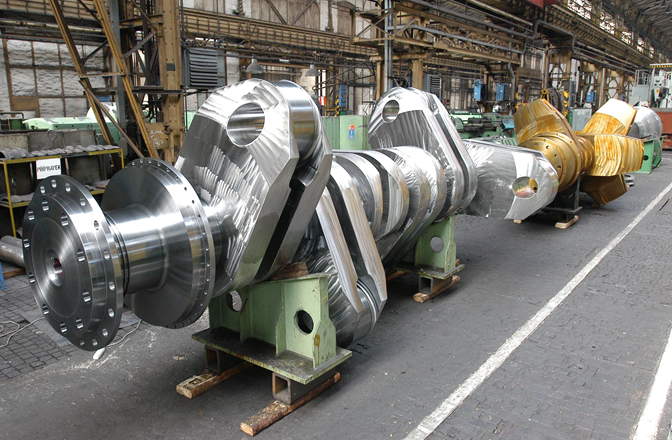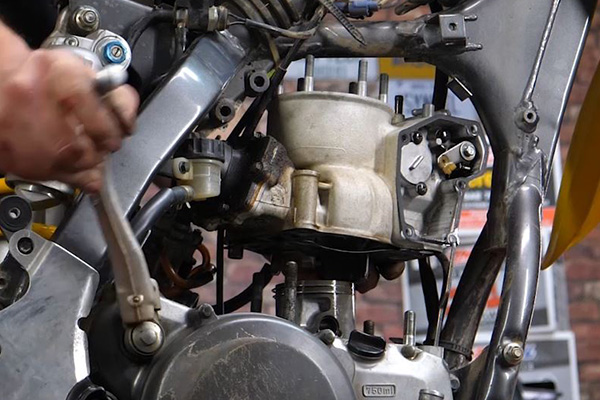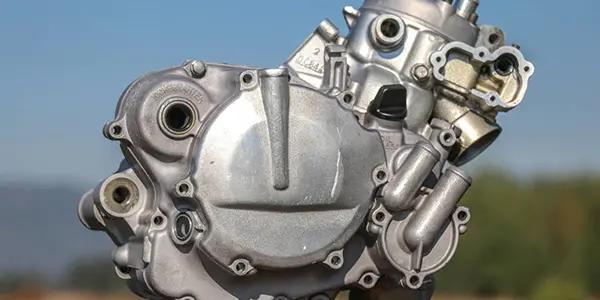The two-stroke engine is a lightweight, high-power internal combustion engine commonly used in motorcycles, lawn equipment, and marine vehicles. Known for its simplicity and punchy performance, the two-stroke engine is an engineering marvel—especially when compact power is a priority.
In this article, we’ll explore how a two-stroke engine works, its advantages and disadvantages, where it’s commonly used, and how it compares to the more common four-stroke engine.
⚙️ What Is a Two-Stroke Engine?
A two-stroke engine is a type of internal combustion engine that completes a power cycle with two strokes of the piston (one revolution of the crankshaft), compared to four strokes in a four-stroke engine.
🔁 The Two-Stroke Cycle Includes:
- Compression Stroke: As the piston moves upward, it compresses the fuel-air mixture in the combustion chamber.
- Power Stroke: The spark plug ignites the compressed mixture, causing an explosion that forces the piston downward—delivering power and simultaneously expelling exhaust and drawing in a new mixture.
This rapid cycle allows the engine to produce power with every revolution, leading to higher power output for its size.
🧩 Key Components of a Two-Stroke Engine

- Piston: Moves up and down to create compression and transfer power.
- Crankshaft: Converts the piston’s movement into rotational force.
- Spark Plug: Ignites the fuel-air mixture.
- Reed Valve/Ports: Manage fuel intake and exhaust timing.
- Cylinder: Houses the piston.
- Carburetor: Mixes air and fuel before it enters the engine.
Unlike four-stroke engines, two-stroke engines do not have valves; instead, they use ports to control airflow.
🚀 Advantages of Two-Stroke Engines
✅ 1. High Power-to-Weight Ratio
Two-stroke engines produce power on every revolution, giving them twice the power output of a four-stroke engine of similar size.
✅ 2. Lightweight and Compact
They have fewer moving parts and are ideal for small machines like dirt bikes, chainsaws, and scooters.
✅ 3. Simplicity in Design
With no valve mechanism, two-stroke engines are easier to maintain and repair.
✅ 4. Lower Manufacturing Cost
Fewer components mean reduced manufacturing costs, making them more affordable.
⚠️ Disadvantages of Two-Stroke Engines
❌ 1. Less Fuel Efficient
Two-stroke engines consume more fuel because of incomplete combustion and oil mixing with the fuel.
❌ 2. Higher Emissions
They emit more unburnt hydrocarbons and pollutants, making them less environmentally friendly.
❌ 3. Shorter Lifespan
Because they run hotter and lack a dedicated lubrication system, they tend to wear out faster.
❌ 4. Requires Oil Mixing
Most two-stroke engines need oil to be pre-mixed with fuel, adding an extra step in maintenance.
🔍 Two-Stroke vs. Four-Stroke Engines: Key Differences
| Feature | Two-Stroke Engine | Four-Stroke Engine |
| Power Cycle | Every revolution | Every other revolution |
| Size & Weight | Smaller, lighter | Larger, heavier |
| Power Output | Higher (for its size) | Moderate |
| Efficiency | Lower | Higher |
| Emissions | Higher | Lower |
| Lubrication | Oil-fuel mix | Separate oil system |
| Maintenance | Simpler | More complex |
🚜 Common Applications of Two-Stroke Engines
- 🏍️ Motorcycles & Dirt Bikes
- ✂️ Lawn Equipment (trimmers, chainsaws, leaf blowers)
- 🚤 Marine Outboard Motors
- 🛷 Snowmobiles
- 🛺 Small Scooters and Mopeds
- 🧺 Portable Generators
Two-stroke engines are ideal where size, weight, and simplicity are more critical than fuel economy or emissions.
🧪 How to Maintain a Two-Stroke Engine

Proper maintenance is essential for performance and longevity.
🛠️ Basic Two-Stroke Engine Maintenance Tips:
- Mix the correct oil-to-fuel ratio (typically 50:1 or 40:1).
- Clean or replace the air filter regularly.
- Use fresh, clean fuel to avoid clogging.
- Clean the spark plug and replace it when needed.
- Avoid overheating; don’t run the engine at full throttle continuously.
🌿 Are Two-Stroke Engines Still in Use?
Yes, but their use is declining in favor of cleaner, more efficient four-stroke engines due to emission regulations. However, two-stroke technology continues to evolve, especially in applications like:
- Fuel-injected two-stroke dirt bikes
- Direct-injection marine engines
- Eco-friendly two-stroke hybrids
FAQs About Two-Stroke Engines
Q1: Why are two-stroke engines so powerful for their size?
Because they fire once every revolution, producing more power relative to their engine size compared to four-stroke engines.
Q2: Do two-stroke engines use oil?
Yes, the oil is typically mixed with fuel to lubricate internal parts.
Q3: Can a two-stroke engine run without oil?
No. Running without oil will cause engine seizure due to lack of lubrication.
Q4: Why are two-stroke engines louder?
Their rapid firing rate and exhaust design contribute to a louder, sharper engine sound.
Q5: Are two-stroke engines banned?
Not banned, but restricted in many regions due to their high emissions. Newer eco-friendly models are being developed.
Q6: How long does a two-stroke engine last?
With good maintenance, it can last hundreds of hours—though generally shorter than a four-stroke engine.
Q7: Can I convert a two-stroke to a four-stroke engine?
No. It would require replacing the entire engine design and components.
Q8: What’s the best oil-to-fuel ratio for a two-stroke engine?
Check the manufacturer’s manual. Common ratios are 50:1 or 40:1 (fuel to oil).
Conclusion: Is a Two-Stroke Engine Right for You?
The two-stroke engine is a remarkable blend of simplicity, power, and lightweight design. While not as clean or fuel-efficient as four-stroke engines, it remains the top choice for applications where weight, performance, and cost-effectiveness are crucial. Whether you’re riding a dirt bike or firing up a chainsaw, understanding how your two-stroke engine works helps you get the most out of it—while extending its life and performance.




